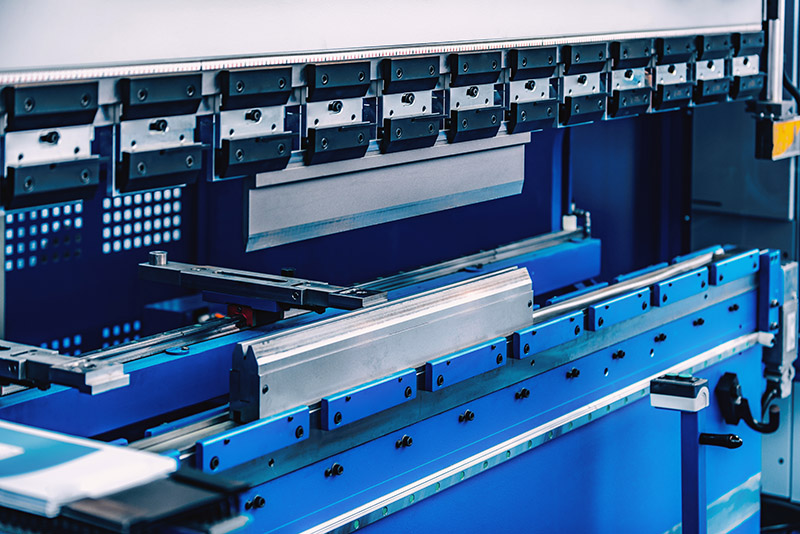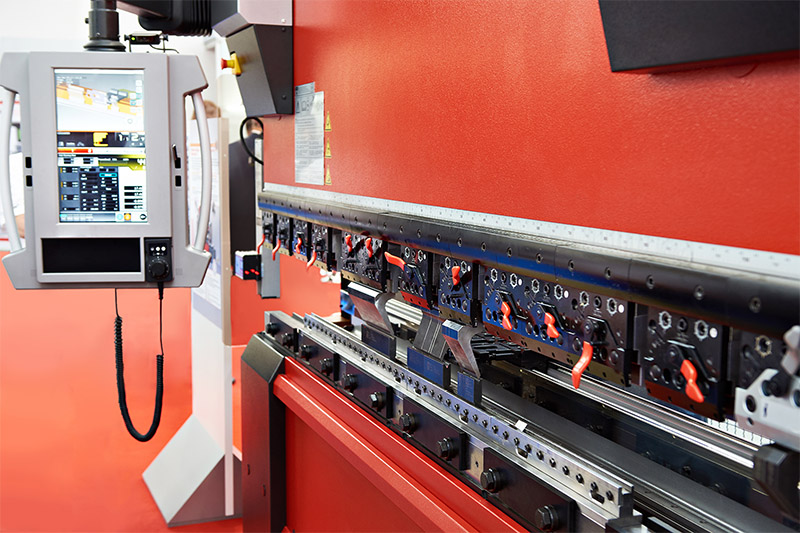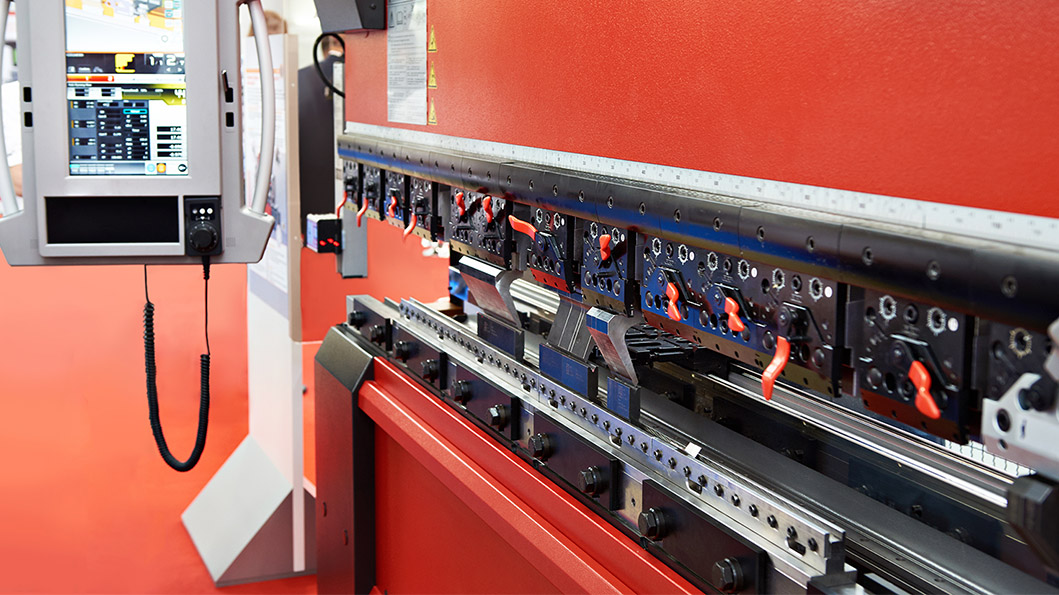With our three Amada hydraulic press brakes we can form sheet metal up to 120″ in length. We also have a Akbend sheet metal roller (aka power roller).
What is CNC Forming?

CNC forming is the process of turning sheet metal into three-dimensional parts by exerting applied force. This force must be great enough to change the initial shape of the metal. Forming is the second step of metal fabrication (the first being cutting, the last step being finishing & assembly).
Applications of Forming
CNC forming is a highly efficient and repeatable means of bending raw metal into parts. This is because critical machine parameters (like depth of bend, amount of pressure required, and bend order) are stored for future runs to ensure consistency.
Metalforming is used in a wide variety of industries, including aerospace, automotive, architectural, construction, lighting, agricultural, machinery, and solar.
Considerations for CNC Forming
Using multiple bend radii for the same part requires additional set up time, thereby increasing cost. Whenever possible, use the same bend radius for all bends throughout the part.
It is highly advisable to show dimensions on a drawing in the formed view, as opposed to the flat pattern view (if applicable). This will help to reduce or eliminate misunderstandings about how the dimension should be applied.
Holes positioned near bend lines are prone to distortion as the nearby material stretches and compresses. Ideally, holes should be kept as far from bend lines as possible. If a close proximity is necessary, request that the hole be reamed after forming to re-establish its original shape.
Block Tolerances for CNC Forming
For Materials Up To 1/8″ Thick
| Angle | +/- 1° |
| Bend to Bend | +/- 0.015″ |
| Bend to Feature | +/- 0.01″ |
| Flange Length | +/- 0.007″ |
For Materials Up To 1/2″ Thick
| Angle | +/- 1° |
| Bend to Bend | +/- 0.03″ |
| Bend to Feature | +/- 0.015″ |
Our Forming Equipment
| Make | Model | Machine Type | Max Tonnage | Max Length |
|---|---|---|---|---|
| Amada | HG 1303 | Hydraulic Press Brake | 146 tons | 122.4″ |
| Amada | HG 8025-M15 (x2) | Hydraulic Press Brake | 89 tons | 102.4″ |
| Amada | RG 5020 | Hydraulic Press Brake | 60 tons | 60″ |
| Akbend | ASM 130-15/4.0 | Sheet Metal Roller | 60″ |
Hydraulic Press Brakes

Press brakes are machines for bending sheet metal and plate metal. The bend angles are created by clamping the sheet of metal on two sides using C-clamps. Underneath the sheet is a V-shaped die. The top beam has a appendage, called a press ram, or a punch, which can hold different dies. Most often, this is a V-shaped die. The top beam presses down, and the pushes the metal sheet into an angle.
The most important specifications with a press brake are the tonnage and bending length. The bending length is the maximum length a metal sheet can be bent by a press brake. The tonnage helps to calculate the load limit for a given bending job. The load limit is measured in tons per inch, at the center of the press.

